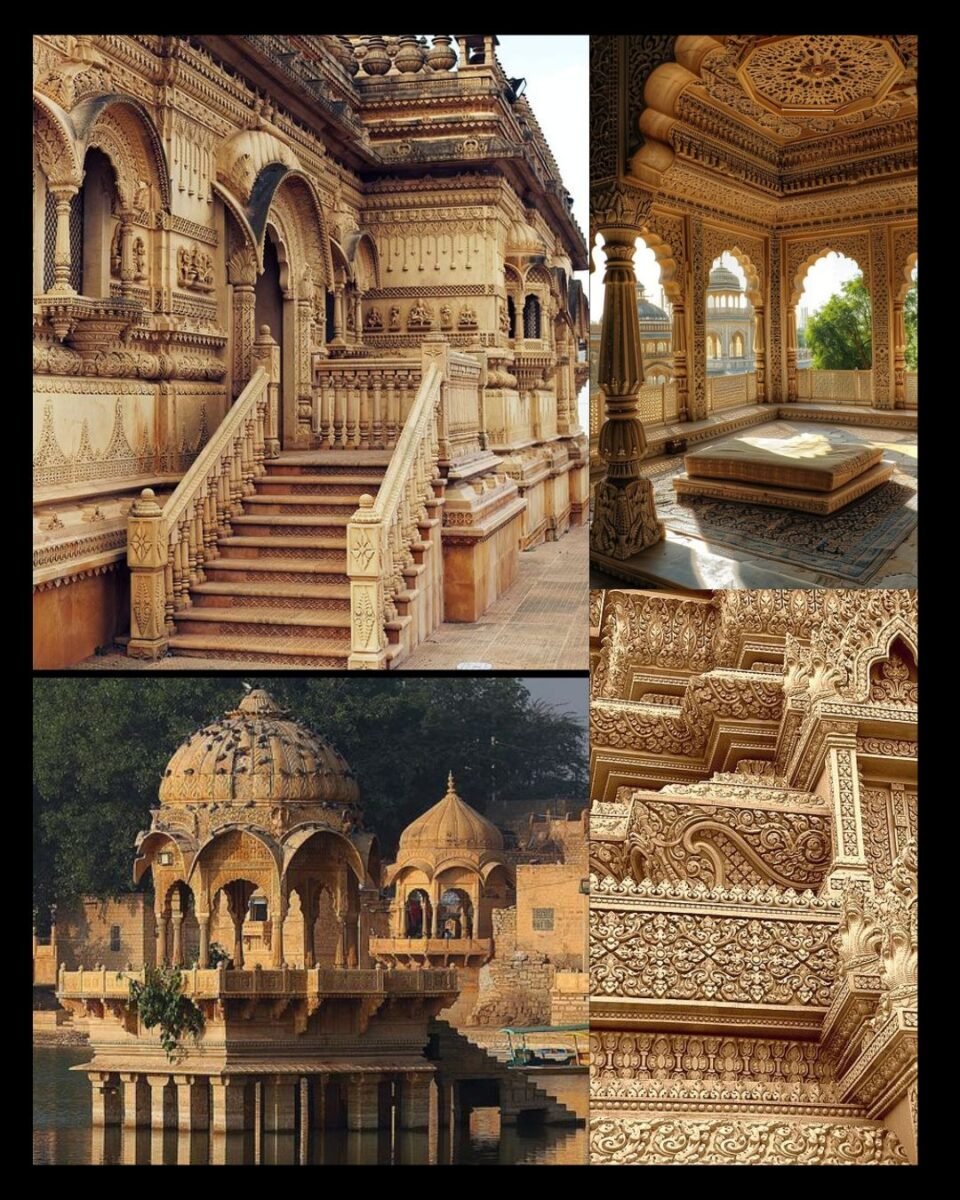Architectural Order :
Architecture is a visual language that speaks volumes about culture, history and human ingenuity. In India, this language is particularly rich, with each structure telling a unique story through its design.
Underpinning these architectural stories are the fundamental principles of order that elevate the simple structure to breathtaking spaces.
The Pulse of Indian Design :
Rhythm and repetition in architecture are like the steady pulse of a musical composition that provides structure, continuity and harmony. Rhythm is the regular recurrence of lines, shapes, forms or colours that creates organised movement and visual flow while repetition is the reuse of similar elements, patterns or motifs in a building or design that establishes consistency to define the overall architectural theme.

The Chand Baori stepwell in Rajasthan is a perfect example for this principle. The hypnotic array of its repeating steps and the mesmerising patterns serving both form and function creates a visual symphony that delights the visitors. Chand Baori is a reminder that practicality and aesthetics can coexist in an architectural design.
Dominance and Subordination in Built Forms :
Hierarchy in architecture is about emphasising importance through visual dominance – that is from the general to the specific! It is the articulation of significance of a space or form through its size, shape, placement or other visual characteristics relative to the other elements in the composition.

The Virupaksha Temple complex in Hampi illustrates this principle effectively. It has a 50 metre main gopuram tower over surrounding structures, immediately establishing its significance. Within the complex, the main shrine dedicated to Lord Shiva is larger and more ornate than the subsidiary shrines. Carvings become more detailed as we move towards the inner sanctum that subtly guides the visitors to an increasing spiritual importance.
Guiding Lines in Architectural Composition :
An axis in architecture acts like an invisible thread that ties different elements together and organises space and movement. This is an imaginary line that organises architectural elements along a path that often helps to provide a sense of procession, focus or symmetry in the design.

The City Palace in Jaipur showcases this principle through its series of courtyards aligned on a central axis. From the Mubarak Mahal to the Chandra Mahal, the axial arrangement of this structure guides the visitors through an architectural journey that reveals new elements and narratives at each turn, developing the palace’s grandeur gradually.
The Balancing Act in Indian Structures :
Symmetry in architecture can be defined as a perfectly composed photograph coming into life that makes us feel just right. It creates a visual equilibrium that pleases your eyes and soothes your soul. Symmetry can be defined as the balanced distribution of identical or similar forms and spaces on opposite sides of a dividing line or point.

The Adalaj Stepwell in Gujarat draws attention to this principle beautifully. Its mirrored sides create a balance that is both visually appealing and functionally efficient. This symmetry isn’t merely aesthetic; it reflects the Indian philosophy of balance and harmony in all aspects of life.
Adaptation of Forms into the Indian Architecture :
Transformation in architecture speaks about the evolution of design over time. This is the principle by which an architectural concept, structure or form is modified through a series of manipulation and permutations while retaining its original identity.
The Indian architectures are living entities that constantly evolve while staying close to its authentic roots. The principle of transformation is evident in how traditional forms are adapted to the modern needs.

For example, the Indian Institute of Management in Ahmedabad, you can witness this clearly. This is where the architect Louis Kahn transformed the traditional courtyard designs into a modernist masterpiece.
To the long lasting legacy of Architectural principles :
The principles of order – symmetry, rhythm, repetition, hierarchy, axis and transformation – are the secret ingredients that make Indian architecture so captivating. They are more than just some academic concepts. They are practical tools that architects use to create spaces that resonate with innate beauty and order.
They are also a portrayal of cultural values, spiritual beliefs and artistic expressions. From ancient to the modern structures, these principles continue to shape the Indian architectural landscape.

Understanding these principles can inspire new designs that honour traditions while exploring innovation. Next time you walk through Indian architecture, take a moment to observe these principles at play and you will find a new level of appreciation for the thoughtful designs that surround us.
Bibliography :
- Ching, F.D.K. Architecture: Form, Space and Order (3rd Editition. John Wiley & Sons.
- Designing Buildings. Principles of Order in Architecture. https://www.designingbuildings.co.uk/wiki/Principles_of_Order_in_Architecture
- Gharpedia. Know 6 Ordering Architecture Principles in Design. https://gharpedia.com/blog/know-6-ordering-architecture-principles-of-design/
- Smithsonian Instituition Archives. Ordering Principles Activity. https://siarchives.si.edu/sites/default/files/pdfs/Renwick_Ordering_Principles_Activity.pdf
- Your Own Architect. 6 Ordering Principles Used in Architecture. https://www.yourownarchitect.com/6-ordering-principles-used-in-architecture/
